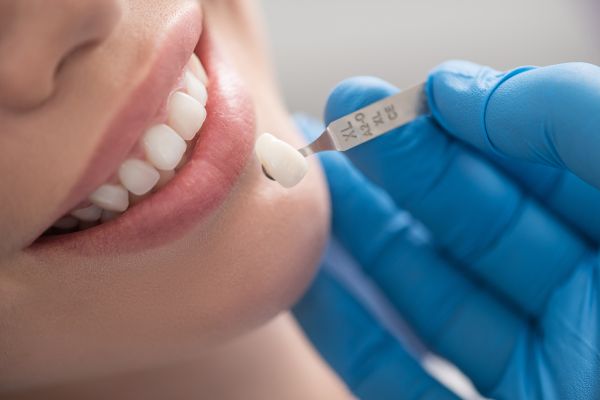If you’ve recently had gum grafting or are preparing for the procedure, you might be wondering what recovery looks like. Gum grafting is a common periodontal treatment that helps repair receding gums, prevent further tissue loss, and protect tooth roots.
While the results can be life-changing for your oral health, recovery does take time. Knowing what to expect week by week can make the healing process less stressful and help you avoid complications.
Let’s break it down.
Understanding Gum Grafting Basics
Gum grafting involves taking gum tissue from another part of your mouth (often the palate) or using donor tissue, then attaching it to areas where the gums have receded.
The goal is to:
- Cover exposed tooth roots
- Stop further gum recession
- Reduce sensitivity
- Improve the appearance of your smile
Week 1: Immediate Post-Op Period
What You’ll Feel
- Mild to moderate pain, especially if tissue was taken from your palate
- Swelling around the treated area
- Sensitivity to temperature
- Minor bleeding or oozing for the first 24 hours
What to Do
- Take prescribed or over-the-counter pain relievers as directed
- Use cold compresses on your face (20 minutes on, 20 minutes off) to reduce swelling
- Stick to a soft, cold diet: smoothies, yogurt, applesauce, mashed potatoes
- Avoid brushing the graft site
- Don’t smoke, drink alcohol, or use a straw—these can disturb healing
This first week is all about protecting the surgical site and minimizing irritation.
Week 2: Initial Healing Sets In
What You’ll Feel
- Pain will begin to subside
- Swelling will decrease
- A white film (fibrin) may form over the graft—this is part of the healing
What to Do
- Continue eating soft foods
- Keep up with any antibiotic or antimicrobial mouthwash regimen
- Gently brush areas away from the graft site
- Still avoid flossing near the treated area
Your dentist may schedule a follow-up during this week to check your progress.
Week 3: Tissue Starts to Strengthen
What You’ll Feel
- Discomfort will be minimal by now
- The graft may look pinker and more integrated with surrounding gum tissue
- You might still feel a slight pull or tightness when talking or eating
What to Do
- Gradually reintroduce more foods, but still avoid anything crunchy or spicy
- Ask your dentist if you can begin using a soft toothbrush near the area
- Continue to avoid smoking and alcohol, as they delay healing
This week marks a shift into more stable healing. Keep following all hygiene instructions.
Week 4: Stabilization Phase
What You’ll Feel
- The graft site will look healthier and feel more secure
- Any initial numbness or tingling should fade
- You may feel almost back to normal, but don’t rush it
What to Do
- Keep up your oral hygiene routine carefully
- You may be cleared to brush gently at the site
- Return to normal foods slowly—test with soft cooked veggies, pasta, and eggs
While things are looking good, the underlying tissue is still healing. Stick to the dentist’s recovery timeline.
Weeks 5–6: Final Healing and Return to Normal
What You’ll Feel
- The area will feel like part of your natural gums
- Most patients are pain-free and fully functional by this stage
What to Do
- Maintain a consistent oral hygiene routine
- Keep all follow-up visits to ensure long-term success
- Discuss with your dentist any adjustments needed
You may receive clearance for flossing the area at this stage, depending on how well the graft has taken.
Potential Red Flags to Watch For
Although complications are rare with proper care, contact your dentist if you notice:
- Excessive bleeding that doesn’t stop with pressure
- Signs of infection: pus, severe swelling, fever
- Severe or worsening pain after the first week
- Graft tissue that appears black, grey, or is sloughing off
Early detection is key to preventing bigger issues.
Tips for a Smooth Recovery
- Sleep with your head elevated during the first week
- Avoid intense physical activity for at least 5-7 days
- Use saltwater rinses after the first 24 hours if your dentist allows
- Don’t touch or pull at the graft site with your tongue or fingers
- Follow your dentist’s instructions exactly—even when you feel better
Gum grafts are a partnership between your body and your dentist. Your job is to support the healing.
Long-Term Benefits of Gum Grafting
Once healed, a successful gum graft offers significant benefits:
- Reduced tooth sensitivity
- Improved gum appearance
- Stronger support for teeth
- Lower risk of decay and further recession
You’ll not only feel better but also protect your teeth for the long run.
Considering Gum Grafting?
From initial consultation to full recovery, our Discover Dental Team is here to guide you every step of the way.
If you’re looking for an experienced dentist in Kelowna to help with receding gums, gum sensitivity, or overall oral health, we’re here to help. We’re proud to provide expert gum grafting procedures and compassionate care.
Healing from gum graft surgery is a journey, but one that pays off with better oral health and a stronger smile. With a week-by-week understanding of what to expect, you can feel confident and prepared as you recover.



